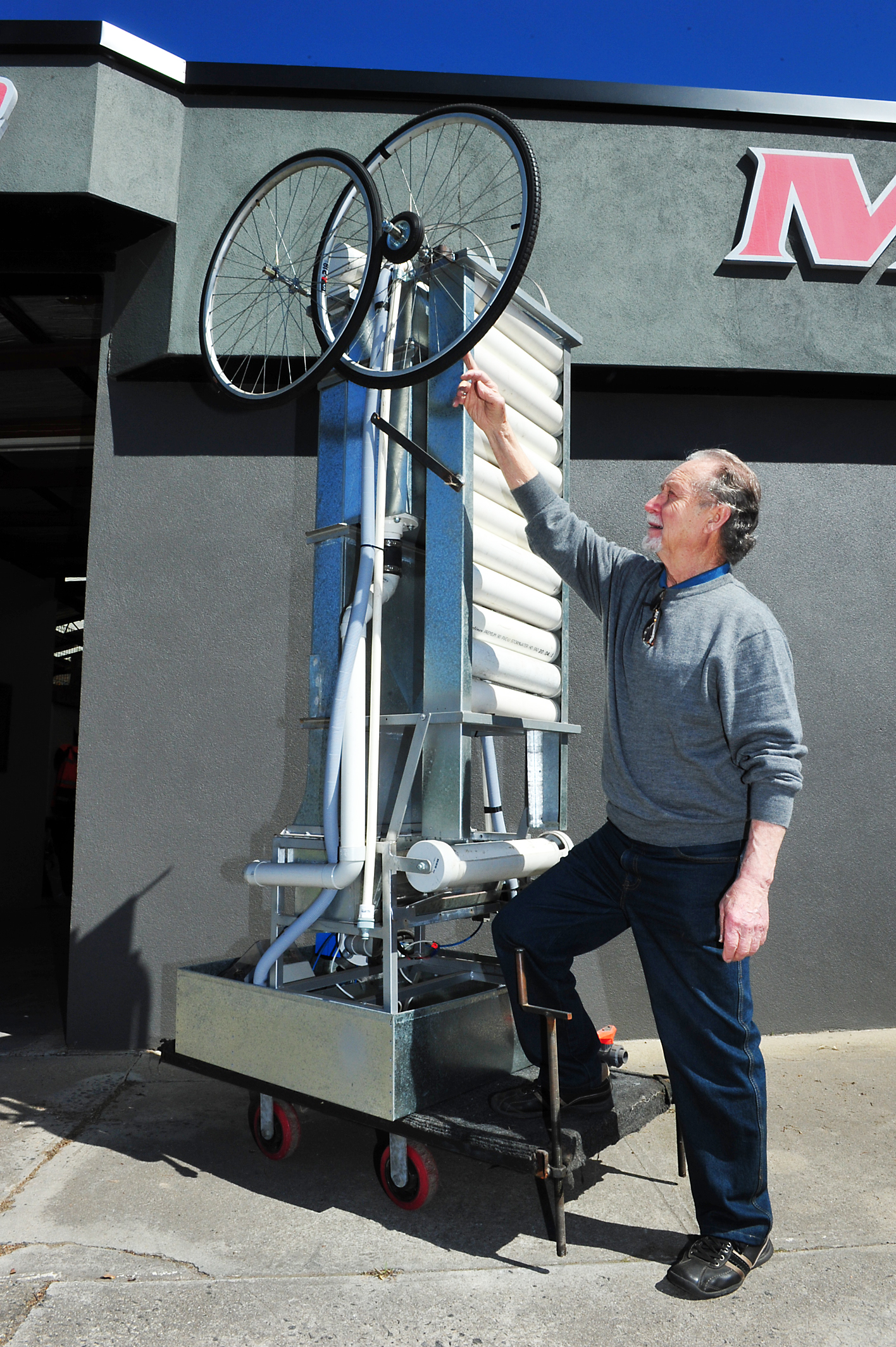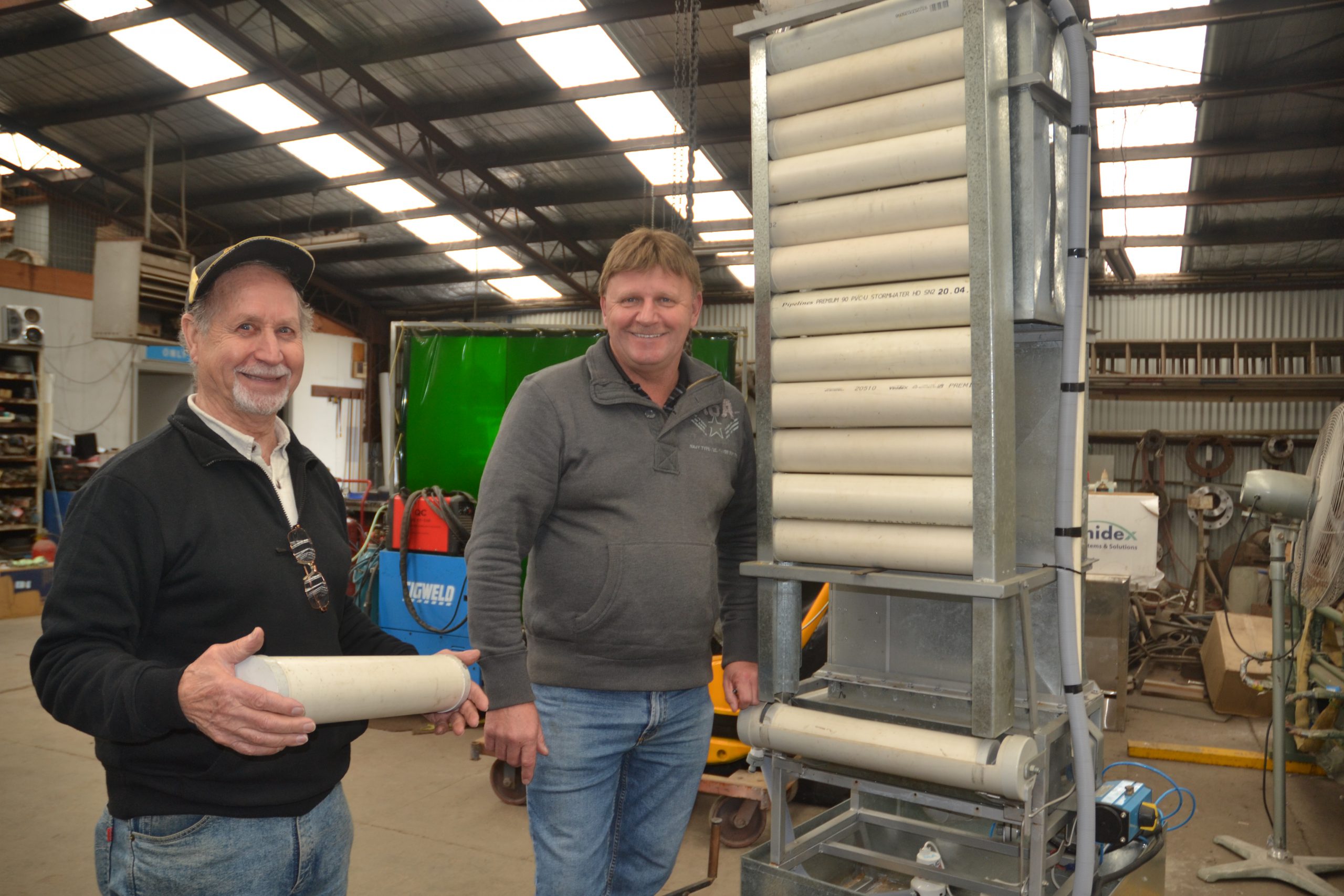By LOUIS NELSON
For countless dreaming inventors across the globe, there is no prize higher than creating perpetual motion.
Despite centuries of debate challenging its plausibility, countless lifetimes have been spent on drafting boards, in workshops and in restless beds, trying to crack the code of the fabled self-propelling machine.
Morwell’s own backyard visionary, Sam Spataro, has been no exception, having spent 40 years trying to realise the holy grail of inventions.
After years in the development pipeline, Mr Spataro believes he has created the next closest thing.
Painstakingly built in spare time over two and half years, in collaboration with the vital hands-on input of local plumber Ricky Miller, Mr Spataro has developed a prototype for his water-based machine.
Harnessing the natural forces of buoyancy and gravity, air-filled cartridges are continuously fed through the bottom of a vertical water tank, through which the cartridges quickly float into a turnstile, forcing it to rotate.
The spent cartridge then pops out the top of the tank, after which gravity takes its affect, feeding it back to the bottom of the machine.
While not perpetual motion by definition – the prototype requires small energy inputs to continuously feed air filled cartridges through the tank bottom – the 250 centimetre tall contraption is perilously close to achieving its destiny of generating electricity.
“Once we got that shaft spinning we knew we were onto something – so we are still at the stage where we need to figure out how to harness that power more effectively,” Mr Miller told The Express during a visit to the workshop in late 2012.
“This concept has never crossed my radar before – using flotation and gravity in tandem is not a concept I’ve seen exploited on a large scale.
“But that’s where we need to get this to show that it can produce some real power, but to upscale it requires big equipment, therefore some big money.”
Twelve months later, the ongoing hunt to attract further funding for the project has proved unfruitful.
After having injected tens of thousands of personal dollars into the design, construction, and patent paperwork, Mr Miller can no longer commit time, funds nor energy to the project.
Mr Spataro however has soldiered on; such is his passion to see the machine brought to life, and he feels too close to give up now.
“It’s like chasing a rainbow – the more you chase it the more it goes away,” Mr Spataro said.
Prior to the machine’s conceptualisation, Mr Spataro’s obsession with perpetual motion saw him scurry into an alcove at his home at every free moment – his affectionately titled ‘Ivory Tower’ – where he would be free to think on his own.
When the ‘eureka’ moment came late one night, Mr Spataro said he was glad his wife was sleeping.
“I jumped up on the spot making all sorts of noises, I knew I had found a solution of perpetual motion; just that feeling, I can’t tell you how incredible it is to think I’ve made a discovery like this,” Mr Spataro said.
“I was shaking emotionally, and said to myself ‘you better calm down you jerk’ – I recounted and re-calculated again.”
One third of energy was calculated to be spent on replenishing the tank’s water, calculations pointed to a net energy output of around 60 to 70 per cent.
While the gravity buoyancy concept was vivid, it existed merely in the mind, and the touch of engineering expertise was needed to bring the machine to life.
Mr Spataro approached Mr Miller with the concept, who could see the design could be amended to the point where it would actually turn a shaft, despite the speculation of numerous engineers who have reviewed the designs.
“We are definitely pioneering something here; not many people invent things like this,” Mr Miller said last year.
Mr Spataro’s pursuit to attract the funds to upscale the prototype continues, personally driven by the prospect of creating cheap energy.












